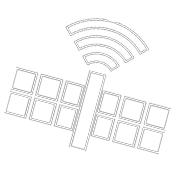- Research interests
Our research provides coverage of the fundamentals, methods and technology, as well as application of laser remote sensing and complementary techniques within environmental domain.
Atmosphere, water and soil are considered as 3-dimensional dynamic systems in continuous interaction, and investigated by use of remote sensing techniques in synergy with other techniques.
This team focuses on synergistic use of laboratory, in situ and remote sensing (active and passive) optoelectronic techniques, as well as modeling tools for various environmental applications. Over the years, state-of-the-art fixed and mobile laboratories have been set up, involving lidars, satellite imagery, microwave radiometry, laser induced fluorescence, particle and gas analyzers, mass spectrometry.
Research topics refer to air and water quality, as well as climatology of short-lived atmospheric species:
- identification of atmospheric pollutants’ sources and sinks, and their properties (physical and optical) during long-range transport in the Free Troposphere
- modeling and experimental retrieval of relevant atmospheric parameters linked to pollutants’ transport
- study of interactions and modifications which influences air quality and climate
- assessment of aerosol, greenhouse gases and precursors' contribution to radiative processes leading to climate change
- investigation of aerosol-clouds interaction
- improvement of weather modification techniques based on theoretical and experimental knowledge of microscale processes in clouds
- development of advanced retrieval algorithms for the detection and rapid characterization of volcanic ash
- survey of multispectral methods for land cover change analysis
- evaluation of the impact of atmospheric pollution on European land ecosystems and soil in a changing climate
